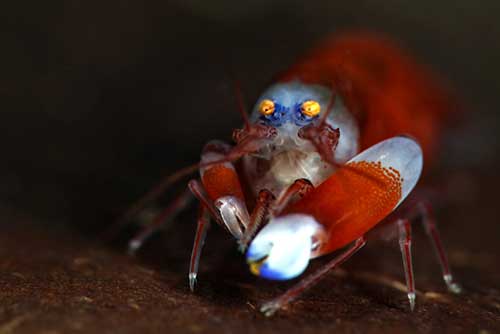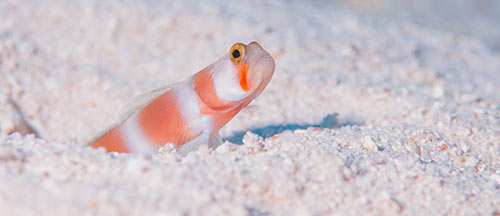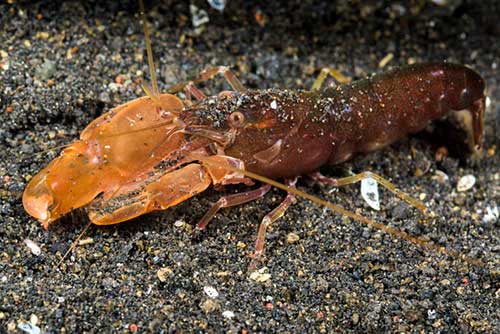Japanese Pistol Shrimp - Answers To Frequently Asked Questions
Posted by Miles Harrison on 08/22/2022
Frequently Asked Questions
What are Japanese Pistol Shrimp?
Where do Japanese Pistol Shrimp live?
How do Japanese Pistol Shrimp create a snapping sound?
How loud is the Japanese Pistol Shrimp's snapping sound?
How fast is the burst that emits from the Japanese Pistol Shrimp's claw?
How did Pistol Shrimp evolve to produce the 'snap'?
How do Japanese Pistol Shrimp use the sound they produce to their advantage?
Are Japanese Pistol Shrimp good for a reef aquarium?
Are there Freshwater species of Japanese Snapping shrimp?
What water parameters are required for Japanese Pistol Shrimp?
What is the Japanese Pistol Shrimp's diet?
January's Giveaways on Light Fish
What are Japanese Pistol Shrimp?
Originating from Sri Lanka, Japanese Pistol Shrimp make an interesting addition to a Saltwater Aquarium or Reef Tank. Distinguished by their large pincers, Japanese Pistol Shrimp are known for their constant stirring of gravel, which they do to locate new food sources.
Japanese Pistol Shrimp are members of the Alpheidae family, which earn their classification due to their asymmetrical claws, where the largest of the two is capable of producing a loud snapping sound. Shrimp in this family are often referred to as Pistol shrimp. These shrimp grow to approximately 1.2-2 inches in length. It is estimated that there are over 600 types of different Alpheidae species.

Where do Japanese Pistol Shrimp live?
Japanese Pistol shrimp live in large colonies throughout coral reefs, oyster reefs, and different types of seagrass. These shrimp are known to dig burrows, which they often share through a symbiotic relationship with Goby fish.

How do Japanese Pistol Shrimp create a snapping sound?
The Japanese Pistol Shrimp has the unique ability to emit noise by using one of its claws, commonly referred to as "The Pistol", the claw can grow to half the length of the shrimp's body.
Instead of traditional pincers, Japanese Pistol shrimp can emit a powerful burst of bubbles, dissuading potential predators. This burst is so powerful, that it has even been documented to break pieces of glass.
How did Pistol Shrimp evolve to produce the 'snap'?
The evolutionary progress of the Pistol Shrimp's claw has long been a mystery. However, through a series of tests and imaging, it's been revealed that the shrimp's pistol ability is the result of subtle variations in joint structure, that have evolved over long periods of time.

What are the three types of Snapping Claws?
According to a study Parallel Saltational Evolution of Ultrafast Movements in Snapping Shrimp Claws [1], there are three distinct types of claws associated with Pistol Shrimp. They are the Pivot Joint, the Slip Joint, and the Cocking Slip Joint, the last of which produces the most powerful snap.
How loud is the Japanese Pistol Shrimp's snapping sound?
Archae shrimp species compete directly with Beluga and Sperm whales as some of the noisiest creatures in the ocean. But noise isn't the only thing Japanese Pistol Shrimp can produce. The "snap" of the pistol is so powerful that it can create a form of sonoluminescence, and can be seen through thermal imaging. Unfortunately, the human eye cannot detect the burst in this spectrum.
How do Japanese Pistol Shrimp use the sound they produce to their advantage?
These shrimp primarily use the 'snap' sound to hunt and communicate. During hunting, shrimp usually hide in an obscure location, such as a burrow. Using its antenna, the shrimp detects any fish that are passing by. Once movement is detected, the shrimp will use its claw to fire a burst that can stun potential prey, which it then pulls back into its burrow.
Are Japanese Pistol Shrimp good for a reef aquarium?
When considering purchasing this species, you must be aware of their intolerance to high levels of copper and nitrate levels. Iodine levels must also be maintained to promote healthy molting. If you're able to maintain stable parameters, these shrimp will make an excellent addition to any reef tank.

What water parameters are required for Japanese Pistol Shrimp?
Japanese Pistol Shrimp prefer temperatures between 72 and 78 degrees. dKH 8-12, pH 8.1-8.4, and Specific Gravity 1.023-1.025.
What is the Japanese Pistol Shrimp's diet?
The Japanese Snapping Shrimp will scavenge the tank for meaty freeze-dried foods and bottom feeder tablets. They will also consume algae and other uneaten foods.
Are Japanese Pistol Shrimp endangered?
Luckily, this species is not endangered. Japanese Pistol shrimp are prolific throughout subtropical waters, however, this does not mean they are immune to threats such as pollution and climate change.
How fast is the burst that emits from the Japanese Pistol Shrimp's claw?
The bubble 'bullet' is fast and can reach a speed of up to 62mph. This intense speed stuns prey in a fraction of a second.
Surprisingly, the force generated produces a whopping 8,000 degrees Fahrenheit, striking any potential prey.
Are there Freshwater species of Japanese Snapping shrimp?
Although there are many similar freshwater aquarium shrimp, there is nothing like the Japanese Pistol shrimp. Freshwater aquarists may want to consider a crayfish, such as the blue crayfish, or other forms of Neocaridina species, such as Cherry and Crystal shrimp.
References
Parallel Saltational Evolution of Ultrafast Movements in Snapping Shrimp Claws [1]
January's Giveaways on Light Fish

